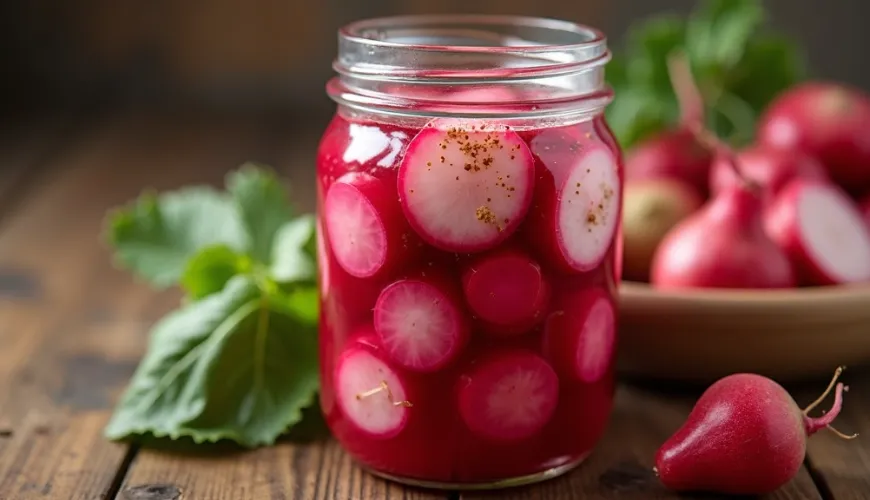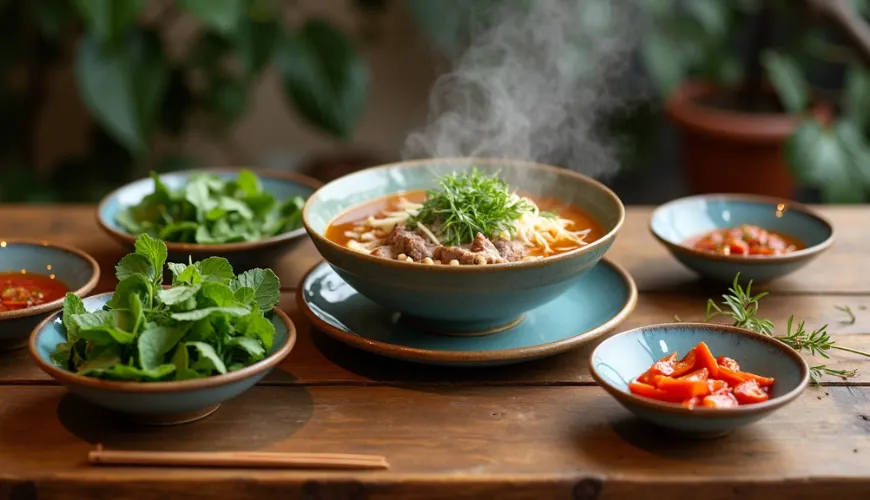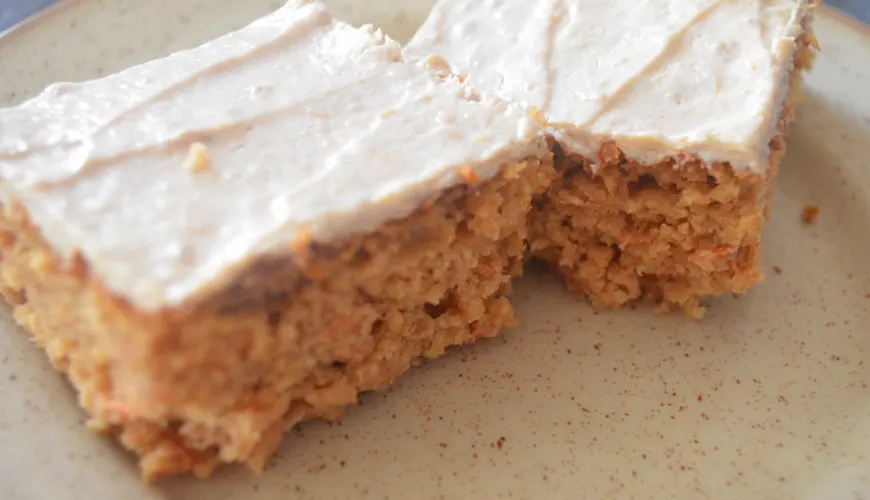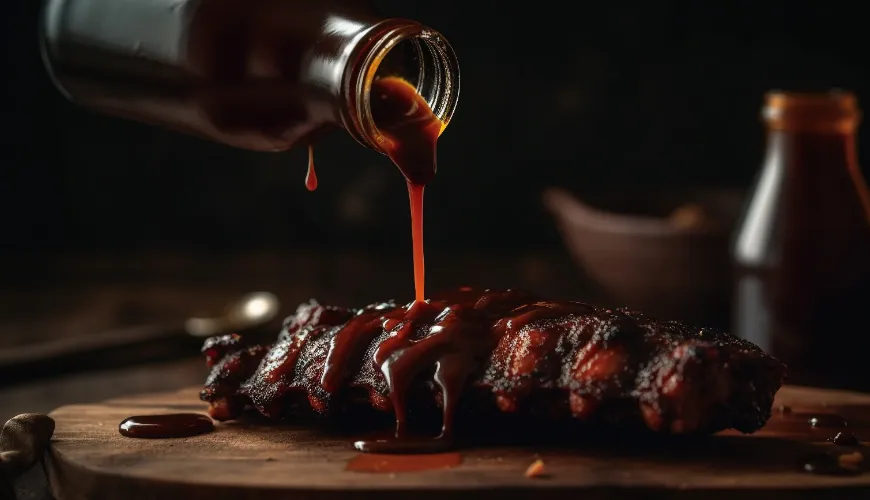
Beef pho bo will amaze you with its unique flavors and aroma.

Vietnamese Pho Soup and Other Beef Delights - Why They Deserve a Place in Your Kitchen
On the streets of Hanoi, it's an unwritten rule - the day doesn't start without a bowl of fragrant hot pho. In recent years, Vietnamese cuisine has won the hearts of Czech diners as well, and it's no wonder. It offers a balanced combination of flavors, fresh ingredients, and health-benefiting components that align with a modern lifestyle. Among all the dishes, one name is mentioned more often than others: pho bo, or beef pho. It's much more than just a soup - it's a cultural phenomenon connecting generations, cities, and continents.
What is Pho Bo and Why Not to Fear It?
Pho bo (pronounced "fo boh") is a traditional Vietnamese soup based on beef broth, rice noodles, and thin slices of meat. Typical accompaniments include fresh herbs like cilantro, Thai basil, mung bean sprouts, lime, or chili. The broth is simmered for long hours, often overnight, to achieve maximum depth of flavor and strength. The result is not only delicious but also nutritious and easily digestible, making it an ideal dish for any time of the day.
One well-known variant is pho bo tai – pho with thin slices of raw beef placed directly in the bowl and covered with hot broth. This way, the meat slightly cooks and remains beautifully pink and juicy. This version is particularly valued among gourmets for its tenderness and intense meat flavor.
In the Czech Republic, pho has become synonymous with a healthy alternative to regular broths. While the Czech beef broth relies on root vegetables, the Vietnamese variant is based on a combination of onions, ginger, cinnamon, star anise, and cloves – spices typical for Southeast Asia, giving the broth its characteristic sweet-spicy flavor.
How to Make Homemade Pho Bo? A Recipe Anyone Can Handle
Many people fear making pho at home due to the time commitment. However, with a bit of planning and quality ingredients, you can master the basic pho bo recipe even in a regular kitchen. The most important part is the broth – and it needs to be cooked thoroughly.
Basic Ingredients for the Broth:
- beef bones (preferably marrow and rib)
- ginger (about 10 cm piece)
- onions (2 large, halved)
- star anise, cinnamon, cloves, cardamom
- fish sauce
- sugar (preferably cane)
- salt
First, the bones are briefly boiled to remove impurities. They are then rinsed and simmered with the spices, onions, and ginger for at least 5 hours (the longer, the better). Finally, the broth is flavored with fish sauce and a bit of sugar.
In a bowl, serve blanched rice noodles, pieces of meat (either boiled from the broth or raw for pho bo tai), and everything is topped with hot broth. It is served with fresh herbs, chili peppers, lime, and mung sprouts.
Interestingly, in some Vietnamese families, the broth is repeatedly "revived," meaning fresh water is added and simmered again with fresh bones – achieving even deeper flavor.
Pho Xao Bo - When You Crave Something Fried
Vietnamese cuisine isn't just about soups. If you're tempted by something heartier, try pho xao bo – stir-fried rice noodles with beef. Although it has "pho" in its name, it's not a soup but a stir-fried dish similar to Asian wok noodles. Here, "pho" refers to the type of wide rice noodles used.
The meat is first briefly stir-fried in a pan (often with garlic and spring onions), then cooked noodles, vegetables (typically pak choi, carrots, onions), and a seasoning mix are added – usually a blend of soy and fish sauce, sometimes oyster sauce as well. The result is a quick, tasty, and nutritious dish that works great as lunch or dinner.
Pho xao bo is very popular in urban environments – both in Hanoi and Saigon. It is especially favored by students and workers who need fast yet filling food on the go.
Vietnamese Cuisine as a Lifestyle
What makes Vietnamese cuisine truly exceptional is its philosophy: harmony between flavors, freshness, and balance. Each meal contains a combination of sweet, salty, sour, and spicy tastes – and at the same time, a balanced ratio of proteins, carbohydrates, and fiber. All without unnecessary fat or processed ingredients.
In today's world, where more people are turning to sustainable eating and a healthy lifestyle, Vietnamese dishes naturally come to the forefront. It's not just a trend – it's a way to eat consciously, respecting both the body and nature.
An example is a young family from Olomouc, who decided to change their everyday eating habits after returning from a trip to Vietnam. They started preparing pho bo at home every week – not just for the taste, but as a ritual where the whole family gathers around the table. As they say, "It's a moment when we slow down. The children pick their herbs, season their soup themselves – and learn to appreciate what they eat."
Where to Find Quality Ingredients?
Making pho at home isn't difficult if you have the right ingredients on hand. Many are now commonly available – fish sauce, rice noodles, or mung bean sprouts can be found in any larger supermarket or specialized Asian stores. However, if you want to go further and prepare the dish truly mindfully, it's worth focusing on the origin of the ingredients.
On the Ferwer.cz online store, you can choose from a range of eco-friendly foods that meet sustainability and quality criteria. Whether it's fair trade sugar, organic spices, or healthy alternatives to soy sauces without added glutamate, Ferwer offers the opportunity to cook with a clear conscience. The advantage is that you don't have to run around multiple stores – everything you need is in one place, with an emphasis on ethics and ecology.
A Small Ritual with a Big Impact
In today's fast-paced world, even a simple act like preparing pho can be a way to stop, connect with family, and take care of your body and mind. Whether you enjoy the delicate pho bo tai, rich pho bo, or hearty pho xao bo, one thing is certain: Vietnamese cuisine has something to offer not only to taste buds but also to the heart.
"When we eat, we're not just pouring soup into a bowl – we're putting our care, tradition, and a piece of culture in there," says renowned Vietnamese chef Luke Nguyen. And that's the magic of pho – simplicity that hides depth.

